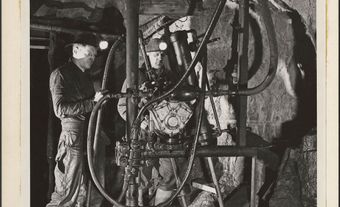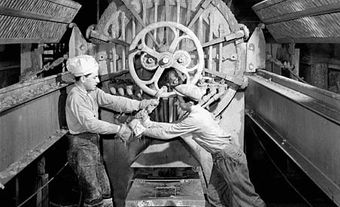The labour force refers to the total adult population available to the labour market at a specific time. Statistics Canada administers the Labour Force Survey (LFS), a monthly household survey, that provides estimates about employment and unemployment rates in Canada as well as labour market characteristics. Data about Canada’s labour force helps economists and other analysts understand the Canadian economy.
What is the Labour Force?
The labour force is defined by Statistics Canada as " the civilian noninstitutional population 15 years of age and over who, during the survey reference week [when labour force statistics are collected], were employed or unemployed." (See also Unemployment in Canada.) Employed persons include all those who worked, part- or full-time, and those who would have been at work were it not for illness, disability, family responsibilities, bad weather, labour disputes or vacations. Unemployed persons include those without work but seeking work, those available for work but not looking for work because they were on temporary layoff and those without work but who have a job to go to within four weeks.
The definition of the labour force is a technical one for gathering statistical data and has been refined and modified over the years both for operational reasons and to reflect social and economic changes (see Statistics). For instance, earlier in the 20th century the labour force was considered to include those 10 years of age and over. This changed to 14 years in 1941 and 15 years in 1961, reflecting the decline of an agriculturally based. (See also Child Labour.)
Participation Rate
The size of the labour force is determined by the size of the adult population (potential labour force) and the proportion of that population willing and able to work (actual labour force). This data is calculated from a monthly survey of 56,000 households with approximately 100,000 respondents across Canada, from which unemployment rates, employment rates, reasons for leaving the labour force, etc., are also calculated. The proportion of the adult population in the labour force is referred to as the participation rate, which varies by region and by demographic factors such as age or sex.

 Share on Facebook
Share on Facebook Share on X
Share on X Share by Email
Share by Email Share on Google Classroom
Share on Google Classroom






